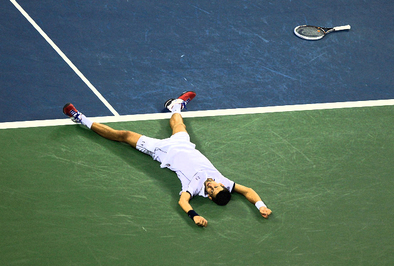Below is a quote from US Davis Cup Captain and former World no.1 who was considered the fittest player of his generation:
“I certainly think these guys at the top, they have very large teams they work with,” said Jim Courier. “They have become very scientific about their sweat loss and replacing the minerals very specifically with what’s coming out of their bodies. And I think they’ve really taken the science on the legal side up to the next level, which is interesting. I think they also have gotten much better at recovery.”
The important of the tennis performance specialist who is trained appropriately to work with tennis athletes and who understands how to get the most of the training aspects is paramount to success on the tennis court at any level. The one major area of improvement over the next decade is the area of recovery. Most players train less than 8 hours per day (tennis, physical etc), but have 16 hours or more to focus on recovery. This recovery is mental, physical, nutritional, emotional and requires the right environment with the correct recovery modalities from sleep, to nutrition, to massage, manipulations, adjustments, hot and/or cold treatments, acupuncture, laser and many other modalities that may help speed recovery.
One of the best points in the article came from one of the best coaches over the last two decades – Paul Annacone. Coach Annacone was the coach of Pete Sampras and now Roger Federer. He emphasized the point that “Rafa is going to train totally different than Roger, and Roger will train totally different than Tsonga.” This statement cannot be overemphasized for the tennis athlete at any level – junior, collegiate, professional, adult league or senior. The training program for each athlete needs to be developed based around the strengths and weakness of the individual athlete, and some athletes need more tennis-specific endurance work, other athletes need more speed and power work, some need extra strength work, many athletes need flexibility work, while all younger athletes needs work on general athletic skills as a foundation to build upon as they age.
The importance of having an individualized tennis-specific program for improving on-court performance and reducing injuries is now a requirement at the highest levels of the game. This same professionalism of training is also being seen at the collegiate and junior levels. Over the next decade this trend is only going to continue, and the need for qualified and highly skilled professionals to work in this environment is only increasing. Check out the International Tennis Performance Association: your resources for the most current evidence-based information from the leading minds in the field of tennis-specific training and the leader in education and certification of professionals who work with tennis athletes at any level
www.itpa-tennis.org
http://www.nytimes.com/2012/05/26/sports/tennis/26iht-srfofitness26.html?pagewanted=all





 RSS Feed
RSS Feed
